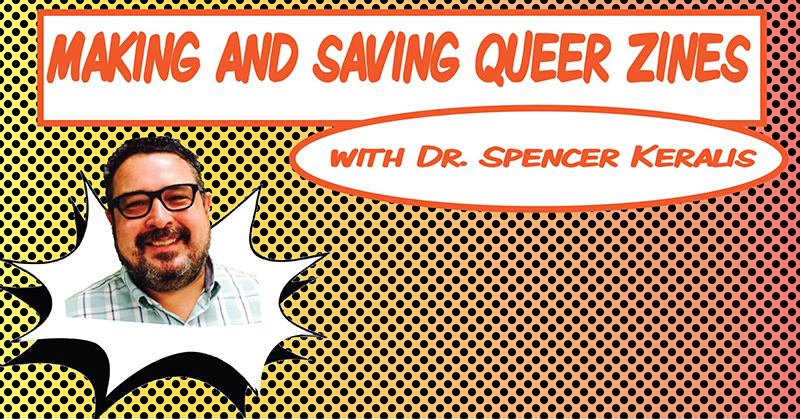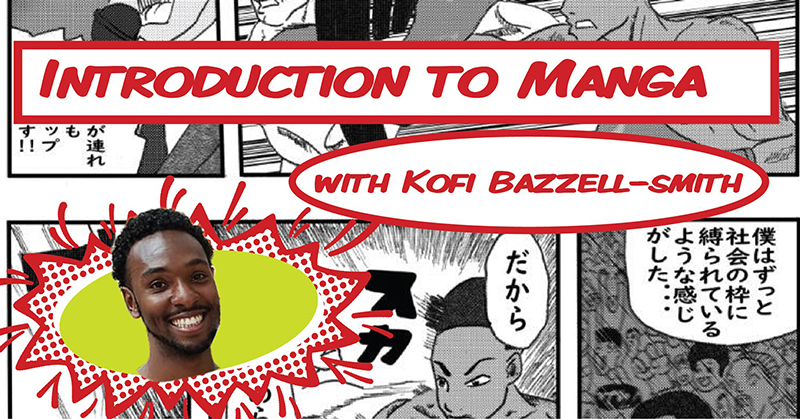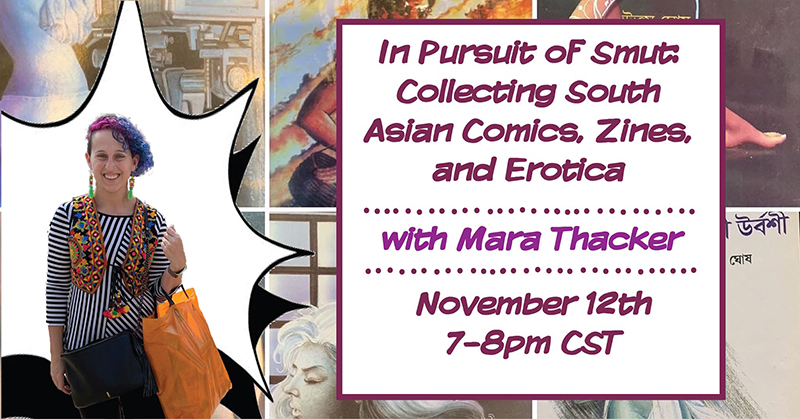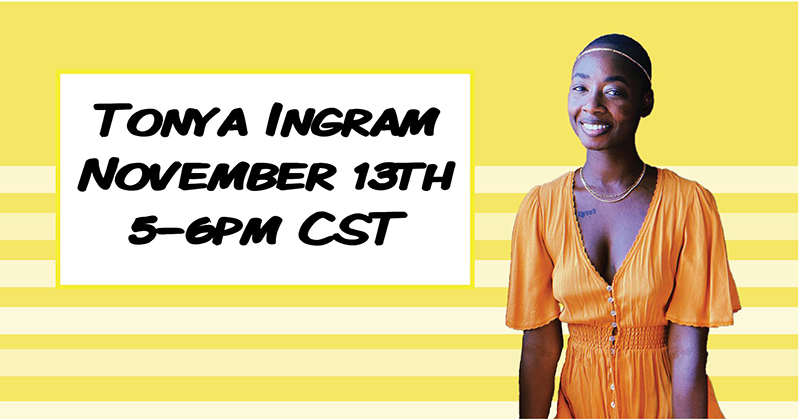As you may have guessed in my list of five things to do in November 2020, Smile Politely has been anxiously awaiting the reemergence of Small Press Fest, now in its virtual format. Having covered its inaugural event in 2019, we were excited to learn what was in store. So we reconnected with Sarah Christensen, now SPF’s main organizer, to get a sneak peek at this year’s line-up and to look back at how this resilient event began. One thing we learned was that while things may look different this year, the challenges of a virtual event inspired a new level of creativity from Christensen and the presenters. Here are the highlights of our conversation.
What exactly is a small press?
According to Christensen, “a small press is basically anything with like a low run volume. A press that’s not going to be putting out thousands and thousands of books for the mass populace. A smaller publisher that has limited funding. It might look for authors with a specific style or content and they usually only do smaller runs of under five hundred copies”
[As we began planning the first SPF], we didn’t want to do a repeat of the Midwest Zine Fest [see more below]. We wanted to include other small publishers in the area. The University of Illinois Press is technically a small press and they have a lot of great content.”
And what about writers and makers who self-publish? “I I think those are more like zine makers and book artists,” notes Christensen. “Small presses are small publishers that help authors put together a book and distribute it and get it out there.” But will zine makers and self-published book makers be included in SPF? The answer is “absolutely.”

Meet SPF organizer Sarah Christiansen
“I’ve been in town for 10 years now, which is really crazy to think about. I started as the visual resources curator in Fine and Applied Arts and that was a temporary position for about three years. And in that time I’d been working a lot with the library cause I have a library background and when my gig was up at FAA. They said come work with us. It was definitely a lot easier than having to move and start over. It was kind of crazy to think how it happened. There wasn’t a defined job description, so it was more of a create-your-own-job. It turned out to be a lot of outreach and engagement. That includes human library, library tours, virtual library tour, in the works, audio tours in four different languages which has a lot of fun. The edible book festival is probably my favorite thing in the world. It involves a lot of cake and puns. I’m not sure there’s a good way to do that virtually.”
When asked if she was a zine artist/maker herself, Christiansen replied “I keep wanting to be. I have ideas. It’s on the agenda for some point. But [for now] organizing [SPF] is my main interaction with zines, apart from being a collector too.”
Christiansen was reluctant to name a favorite zine or zine maker.” It’s hard because they are all so unique. I like the ones that have a different physical style. I tend to get into those. It’s not just the content but how you interact with it. I like the really weird ones.”
Looking back on the inaugural Small Press Fest of 2019 and how it turned Christensen into a graphic designer
“There’s a lot of marketing involved [in these events],” Christensen observes. “And since we don’t have a graphic designer in the library, I actually enrolled as an undergraduate in the graphic design department. I took a class with Eric Benson last year and created all of the graphics for the first Small Press Fest. I got into [small press work] when I took a printmaking class with Emmy Lingscheit. There was a class assignment that introduced me to the zines. I was late to the zine movement, I had heard about it, but didn’t know a lot. At first it didn’t seem like the kind of thing I’d be into. But the more I learned about it, the more I fell in love with it. I found out that we used to have a zine fest here, the Midwest Zine Fest, I think that was around 2013. So I wanted to bring something like that. back. We have a really good community for zines. We have a ton of artists and students and creators. Really creative people who would like to put their ideas out there and highlight self-authorship. It’s been really fun. Last year I applied to the Humanities Institute (formerly IDPH) where they have research clusters and we did one about zines and small presses. There are people from all different disciplines, including people engineering and from CU Fab Lab.”
Among the highlights from 2019 was this surprising story. “Mugiko Nishikawa came from Japan last year and her background is anthropology. She turned her journal articles into zines so that her findings were more palatable to people and easier to disseminate. It really helped get her work out there, and got people talking about it, which was what she wanted. We used the zine cluster to share that model with faculty and show how zines might help translate and transmit academic knowledge to the community and amongst disciplines.”
“I would say it was successful,” says Christensen. “We had a lot more people attend than I thought would. I was really surprised by the turnout, because you never know how these things will go, especially the first time. One student from the Noble Print Club said she made about $300. So I think it was fairly successful for people selling their work. There was a lot of variety in terms of the content. We had the University of Illinois Press there selling books, as well as individual authors selling their books they had printed. There were also smaller zines and distros (distributors focused on helping zine makers and unsigned writers). There were some “per” [personal] zines that are almost like a diary, as well as ones that are largely illustrative.”
SPF involves “getting more vendors and artists to come and making sure you’re getting a diverse representation of voices. That can be difficult. But it’s always a learning experience.”
Deciding to move ahead with a virtual event in 2020
“This year I”m the main organizer.” Christiansen shares. “People get busy and the pandemic has been really hard for a lot of people. I struggled with the idea of whether or not to do it this year. It’s a lot of work for one organizer. It’s also one of those things that is so much better in person. Zines and small press publications are so much fun to hold in your hands and interact with. Personally I think I did it because I really wanted something to look forward to. And a lot of others weren’t able to help, but they were supportive of the idea.”

Each of the three days has a unique theme and a different approach to technology
“The first day, Thursday, willl have an international focus. We’ve got a Manga workshop with Kofi Bazzell-Smith, and a talk by Mara Thacker, a South Asian studies librarian who has gathered lots of South Asian zines. The Undergraduate Library will also be showing a filmed tour of the international library [resources].

On Friday, we’ll be highlighting all of the artists being featured. Artists interviewing artists. I thought it would be a fun way for people to talk to people they might not otherwise know. Another one of my goals was to make it a collaborative experience for makers to make connections. Then we’ll be doing artist readings.

“I’m really excited about this one new idea I got from an event in Houston. We’re doing a Home Shopping Network segment filmed at the IMC by their videographer there. We have a few actors I’ve hired that will act as the hosts. There will just be a green screen background. It will be a little cheesy, but I think it will be really fun. It will show off the work we’d usually sell at the Expo Day. We’ll have a website set up that will showcase all of the artists and their work and direct people to how to purchase copies. And we’ve edited the ordering information into the video just like it would appear on the Home Shopping Network. We’ll air it on Facebook, but it will also be on Urbana Public TV.”
Friday’s keynote speaker is Tonya Ingram. “She’s kind of Instagram famous,” Christensen shares. “She’s [like] a nice warm hug. Her stuff is uplifting. Her latest book of poetry is called How to Survive Today, which is very appropriate.”
Finally, on Saturday “we’re trying to get everyone away from their screens. Urbana zine fest walking map. You get to walk around and follow the prompts and create your own little zine.
Also, a friend of mine does a zine called The Midwest Explorer so she’ll be guiding everyone through Busey Woods and teaching them about the prairie.”
Getting creative with the technology
Small Press Fest 2020 will function primarily on Zoom. However, in addition to the recreation on HSN, “attendees” will be invited to a virtual dance party with DJ Baub, who “according to to Christensen, “is exploring different formats, and will be focusing on localish indy music in order to [stay] in the vein of small DIY artists.”
So if you love zines, small presses, and makers, log on and, if you can, help support the artists of Virtual Small Press Fest 2020.
Virtual Small Press Fest 2020
November 12th through 14th
Individual events are listed on the SPF Facebook page








